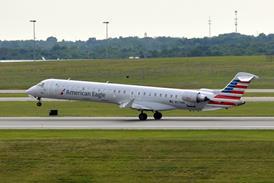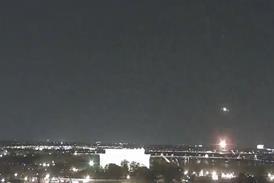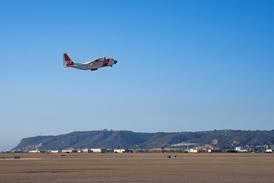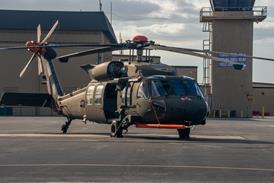Building an additional runway to address capacity constraints and meet future demand for air travel in and out of London has moved from a question of “if” to one of “where”.
Studies have found that an extra runway could be added without jeopardising the UK’s chance of meeting its emissions reduction targets – albeit to the detriment of further developing regional airports, say some. However, concerns over noise and local air quality could still prove difficult to overcome.
In December 2013, the UK’s government-appointed Airports Commission announced it had whittled down to a shortlist of three the options for where and how to add new runway capacity. These include constructing a second runway at London’s Gatwick airport, building a third runway to the northwest at London Heathrow, and extending the northern runway at Heathrow to allow for simultaneous take-offs and landings. A proposal to build an all-new, four-runway airport on the Isle of Grain in the Thames Estuary did not make the shortlist, but backers have been given extra time to make the case for its possible addition in autumn.
The promoters of all four proposals are keen to point out that theirs is the best when it comes to addressing environmental concerns. They will need to spend the next few months putting meat on the bones of these claims, and convincing local residents in particular that their worries are being taken seriously. As Heathrow's operators know only too well from previous thwarted attempts to build a third runway, airport expansion is a political hot potato that can be dropped at any minute. In the words of Airports Commission chair Howard Davies, speaking at the Runways UK conference in London in January: “There are complex issues to address where consensus is in short supply.”
When it comes to noise and local air quality concerns, Heathrow has the steepest hill to climb, given its proximity to heavily populated areas and one of the UK’s busiest motorway networks. To complicate matters further, there are two competing proposals for Heathrow’s expansion – one of which does not have the support or endorsement of the airport’s management. The airport’s own proposal is to build a 3,500m (11,500ft) runway to the northwest of the Heathrow site, which it says would have a smaller noise footprint than the previous third-runway proposal put forward in 2003.
“The proposal aims to reduce the number of people affected by noise and give periods of respite from noise for every community under the flightpath,” says Heathrow sustainability director Matt Gorman. Heathrow bosses do not believe the competing “Heathrow Hub” proposal to extend the northern runway to at least 6,000m – put forward by independent promoter Runway Innovations – can offer such respite to local residents.
“It is up to the Airports Commission to weigh up the environmental effects and decide which is the best option of the two. However, unlike our own proposal for a northwest third runway, Heathrow Hub is not able to maintain the principle of runway alternation to provide periods of respite from noise for communities around Heathrow,” says Gorman. “That principle has been shown to be important to local residents.”
This is disputed by former Concorde pilot and now director of Runway Innovations Jock Lowe, who says that periods of respite are “still possible” under the Hub proposal. Lowe lists a number of initiatives that could be taken both now and in the future to further reduce noise, such as delaying the lowering of aircraft landing gear until a maximum of 6nm (11km) from touchdown, and changing continuous descents to constant rate descents with a minimum of 1,000ft per minute. He says respite could be achieved by regular changes to arrival routings, with “whole day alternation possible for some communities”.
Tim Johnson, director of the Aviation Environment Federation (AEF), believes the Heathrow Hub proposal is “built around addressing the noise question” more than the other shortlisted options. However, he adds that “until we go through a detailed appraisal of each”, the exact noise implications will remain unknown. One thing he stresses, however, is that “noise will mobilise communities and create a political issue”.
While Heathrow’s Gorman highlights research from independent polling company Populus as suggesting that just 36% of local residents oppose expanding Heathrow, Runway Innovations’ Lowe makes the following point: “Noise is the crucial factor, and the people that don’t like noise will make more noise than the people that do.”
Gatwick airport is using its location away from heavily populated areas to position its expansion proposal as having the least impact when it comes to noise pollution. It says the addition of a second runway would mean that 13,800 households would be affected by noise, which it claims is 5% the number of households that would be affected by the construction of a third runway at Heathrow.
“Heathrow has more people living nearby who are impacted by noise than every other European hub airport combined,” says Gatwick’s operator. “That’s why it will always be too politically toxic for expansion.”
Gatwick chief executive Stewart Wingate describes community support for its expansion plans as “strong”, adding: “Gatwick is sparsely populated. Noise at Gatwick is many orders of magnitude less than at Heathrow.”
In its interim report in December, the Airports Commission recommended the establishment of an independent noise authority to offer impartial advice on the effects of noise pollution from aviation. Such an ombudsman is yet to be appointed, but even if it is, the AEF’s Johnson believes that “whether it has any real contribution to make over the next couple of years is quite doubtful”.
Another key environmental concern linked to airport expansion is that of local air quality – an issue which Johnson does not believe has been addressed sufficiently. This has less to do with emissions from aircraft and more to do with surface transportation around the airport. In the case of Heathrow, Johnson says a number of possible solutions have been considered in the past, such as fitting the tunnels leading into Heathrow with “NOx [nitrogen oxide] scrubbers”, but such options have proved to be expensive.
Colin Matthews, whose stint as Heathrow’s chief executive ends later this year, says that “to fix air quality at Heathrow [you need to] replace the fleet of diesel engines coming down the M4 [motorway]”.
But convincing people to leave their cars at home and travel to the airport by public transport means “changing public behaviour”, says Johnson, for which there can be no guarantees. Local air quality “needs to be a real focus for the next stage of the [Airports] Commission’s work”, he adds.
Heathrow recognises local air pollution as being a problem, and says it is attempting to improve the situation. “Aviation is a far smaller contributor to air pollution than road traffic. However, we are already taking significant steps to tackle the problem,” says Gorman. “For example, we subsidise local public transport so people can travel for free without the need for a car. We also charge airlines based on how green they are, so the cleanest aircraft are charged less to land at Heathrow.”
Whichever proposal is selected by the Airports Commission and recommended to the UK government for adoption, the country’s climate change commitments must be honoured. The Airports Commission has concluded that one additional runway is needed in the southeast of the UK by 2030, and another runway may be required by 2050. It notes that these conclusions “are consistent with the Committee on Climate Change’s advice to government on meeting its legislated climate change targets”. These targets include cutting emissions from aviation and shipping by 80% from 1990 levels by 2050.
In the best-case scenario for aviation, this would allow the industry to grow by 60% over the next 35 years, says Johnson. While he agrees with the Airports Commission that “respecting the limits from the aviation industry doesn’t preclude another runway”, he notes that an additional runway in the southeast would mean regional airports “would have very little licence to grow”.
No matter which proposal the Airports Commission selects, the additional runway capacity will not arrive any time soon. None of the proposed new runways would be operational before the mid-2020s. The next few months will see promoters battling to win local support for their projects and submitting to the Airports Commission details on how their designs could be developed and appraised.
The next big hurdle once a scheme has been selected will be steering it through parliament and making it a political reality. The Airports Commission will not put forward its final recommendation until after the next UK general election in May 2015. Even then, former transport secretary Lord Adonis suggests that if the next prime minister “can duck the decision for another five years, they will duck”.
Source: Flight International























